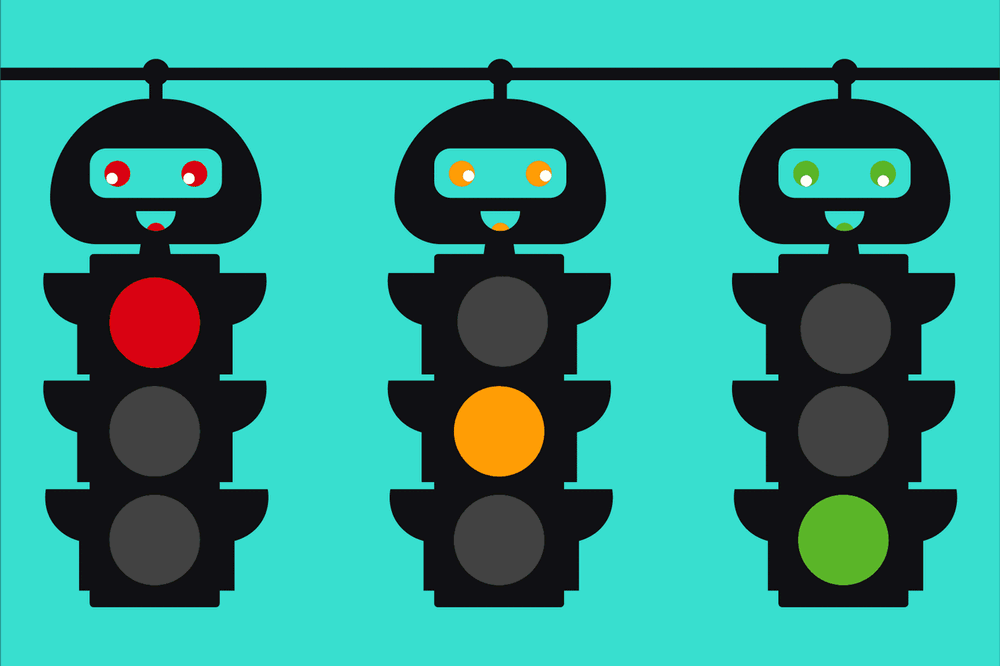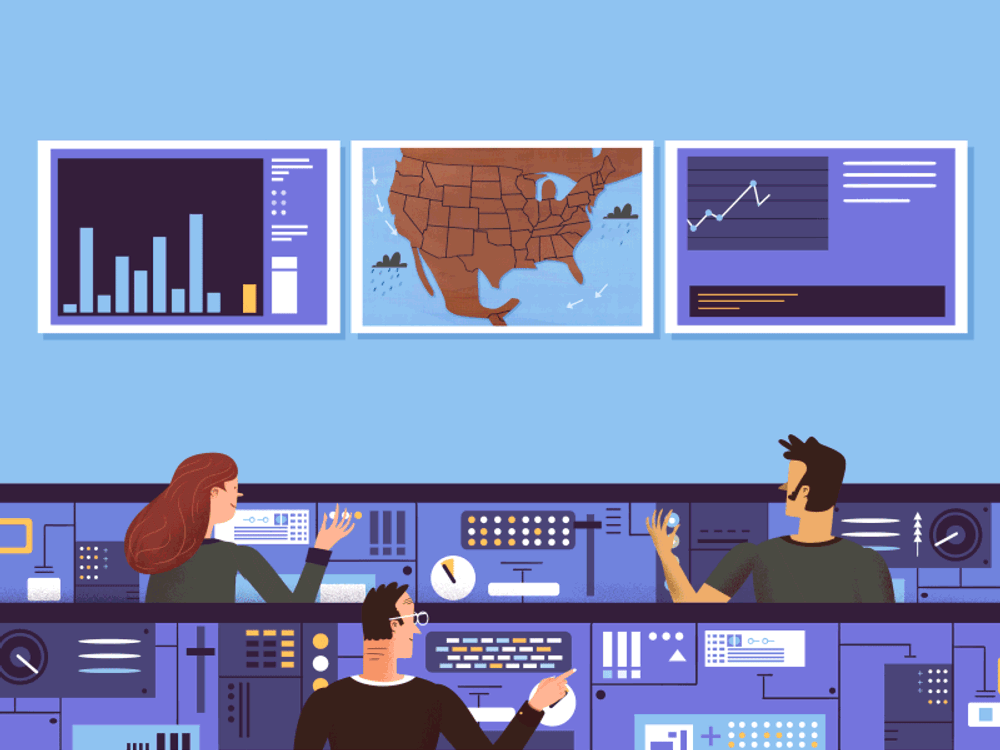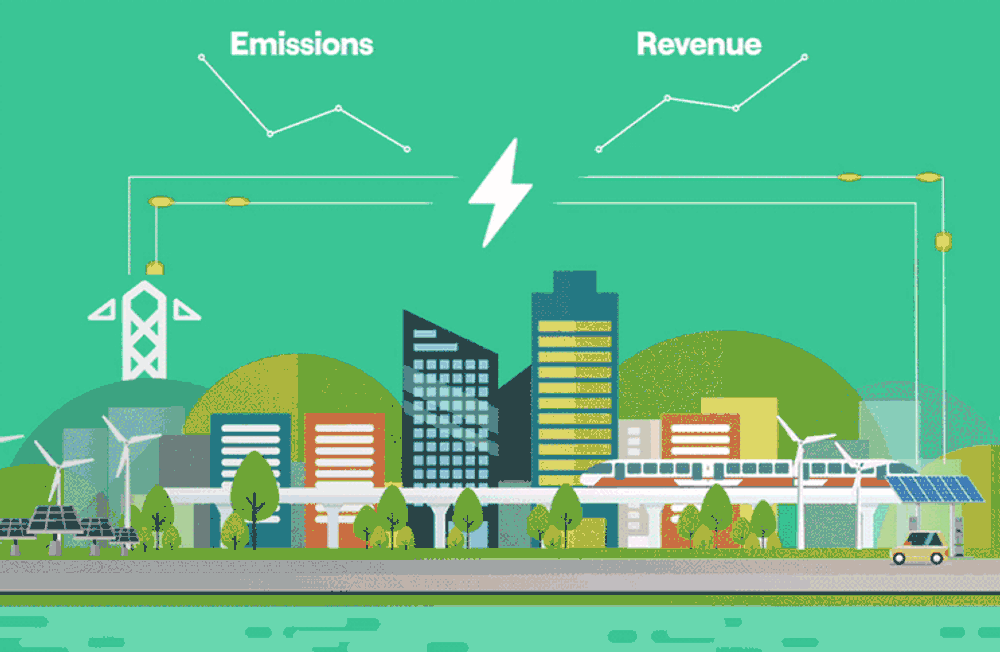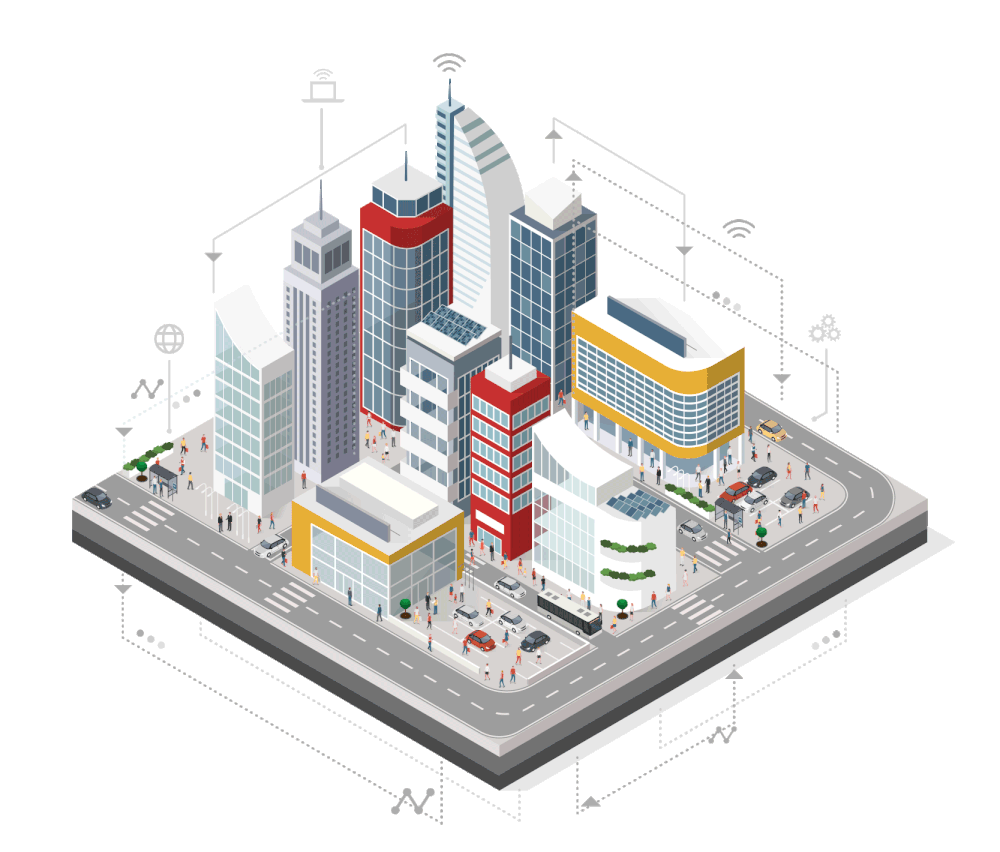- Artificial Intelligence (AI) is redefining urban development, playing an important role in helping cities to be more efficient, sustainable and increase functionality overall.
- By enabling real-time decision-making based on actual events, combining data across different city functions and automating complex systems, AI is driving both immediate and long-term value creation.
- AI is being used in areas ranging from energy and traffic management to public safety benefitting urban planners, city officials and of course citizens, in cities all over the world.
Intelligent traffic management: Saving time and reducing carbon emissions
One of the most important use cases of AI in Smart Cities is intelligent traffic management: AI algorithms can analyse large amounts of real-time data from sensors and cameras to optimise traffic flow, minimise congestion and reduce emissions, which all improve quality of life for inhabitants.

A city like Singapore, where Venturous has an office, has for example, implemented AI-driven traffic systems that dynamically adjust traffic signals based on real-time conditions. Moreover, the island-nation’s extensive public transport network, equipped with smart sensors, have experienced a 92% reduction in the number of bus services with crowding issues, as well as a significant 3- to 7-minute reduction in waiting times. [1]
In the U.S., cities like Los Angeles, known for its recurring traffic gridlocks, are doing similar things. To avoid congestion on its main roads, the sprawling urban area has implemented AI-powered systems for predictive traffic management, anticipating bottlenecks and rerouting vehicles even before any delays occur. The system has improved travel times by an estimated 12%, and up to 16% in certain areas, and helped reduce emissions from congestion by 3%. [2]
Looking ahead, autonomous vehicles with AI features could completely change urban mobility, creating smart transportation networks and minimising infrastructure costs.
Public safety: Real-time predictions lead to immediate response
Public safety is another area where AI is transforming metropolitan areas all over the world.
In 2017, the city of Barcelona, Spain launched Sentilo, an open-source AI system that monitors data from a network of sensors to detect irregularities that could indicate fires or accidents, allowing city officials to act faster and before emergency situations escalate.
Recently the system was further enhanced by using AI to predict natural disasters, such as floods, fusing sensors providing real-time data. This enables municipal technicians and services to monitor of flood risks during heavy rains, potentially saving lives and reducing recovery costs. [3]

In Dubai, surveillance systems based on AI and equipped with video analytics are being used for public security. Similar to what’s happening in Barcelona, these systems can proactively identify possible threats and provide emergency services with critical information, benefitting both public safety and allocation of city resources. As smart cities grow and expand, AI’s predictive capabilities will grow with them, providing important insight in security management.
Energy management: Lower energy costs, stabilized power and new energy sources
Energy management is an additional sector benefiting from AI.
Shanghai, the Chinese mega-city, has made significant investments in AI-powered so-called smart grids, using AI to monitor and optimise energy distribution across the city. The system can help reduce energy consumption by 5-10% at peak hours while also increasing operational efficiency. It is estimated that some 24 million people have been positively impacted by reducing energy costs and stabilising power during times of high demand. [4]

The city has further issued a four-year action plan (2022-2025) to conduct carbon-reduction and energy-conservation reform aiming for an average 1% reduction in power use every year. AI-driven energy load forecasting has allowed the city to better integrate renewable energy sources, such as solar and wind. Shanghai Academy of Artificial Intelligence for Science and Fudan University recently introduced an upgraded AI-powered model for climate and weather forecasting which allows for optimized wind and solar power generation and improved grid load balancing. The energy savings are expected to grow further and is a significant step towards Shanghai’s goal of reaching carbon neutrality before 2060.
And to be clear, AI-systems do not only benefit large urban areas, like Shanghai. On the other side of the world, the significantly smaller city of Copenhagen in Denmark, with only 1.3 million inhabitants, compared to 30 million in Shanghai, applies AI in a similar way as the Chinese city: optimising energy distribution, balancing supply and demand, and introducing new, renewable energy sources into the energy grid.
Looking ahead, AI could help create independent energy districts, where buildings generate, store and distribute their own power, creating net-zero emissions cities.
Urban planning: Predictive maintenance and building smart infrastructure
Urban planning and infrastructure maintenance are other areas ready to be improved by AI applications.
In 2021, Transport for London (TfL) implemented a digital twin solution to monitor and analyse the status of the London underground system. Real-time sensor data was used to reveal information that may have previously been hidden from the human eye, such as faults, and heat and noise hotspots within the transportation system. This digital twin solution enables data-driven decision-making to optimise operations, ensure worker safety, and minimise environmental impact.[5]

Early studies are promising with independent analysis and simulated scenarios showing possible reductions of up to 44% in operational expenses and 26% in capital expenditures within the first year.
Transport for London has also introduced AI-enabled cameras at Underground ticket barriers to monitor whether more people were entering or to exiting. This enabled an increase in passenger throughput by as much as 30%, and up to 90% reduction in queue times, improving quality of life for citizens.
Soon AI could be used to model and simulate complete city expansion, predicting how new developments will affect transportation, utilities and public services. This would enable more efficient urban planning, reducing costs and improving resource allocation, avoiding both over-building and housing shortages. AI could also help monitor critical infrastructure - important highways, bridges tunnels, and sewage systems - identifying wear and tear before they become major issues, minimising costly repairs and downtime and avoiding serious accidents.
For investors, the integration of AI into Smart Cities offers interesting opportunities. AI is driving the evolution of urban infrastructure, making cities more responsive and adaptive, benefiting both citizens, public functions and city planners. This transformation not only enhances quality of life but also enables new possibilities for sustainable growth and long-term value creation in the global urban landscape.
Resources
[1] Singapore Smart Nation and Autonomous Mobility. Smart Nation Singapore. (2024) [2] Los Angeles Traffic Management. Los Angeles Department of Transportation. (2022) [3] Barcelona Public Safety. Barcelona City Council. (2021) [4] Shanghai Energy Management. Shanghai Municipal Government (2024) [5] Transport for London. (2021).







